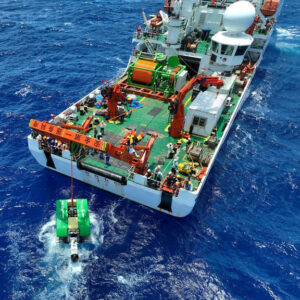China has taken a key step in the global race to explore the ocean floor for minerals after one of its deep-sea mining vehicles reportedly broke multiple national records during a recent trial operation.
The “Kaituo 2” — also known as “Pioneer 2” in English — successfully completed an experiment in the Pacific Ocean last month that demonstrated the technological advances China has made in the field of deep-sea mining.
The most notable was a record-breaking dive to 4,102.8 meters, which marked the first time a Chinese mining vehicle has gone beyond 4,000 meters. For context, the vehicles deployed by The Metals Company, which is exploring the largest undeveloped source of critical minerals underseas, are able to collect samples from depths of 4,300 meters.
In total, the Chinese vehicle completed five dives during the trial, which ran between June 22-26, the other four all reached depths of around 2,000 meters.
The Kaituo 2 represents an engineering prototype independently developed by Shanghai Jiao Tong University, which pioneered a high-mobility technology for complex deep-sea seabed terrain as well as a multi-mineral composite drilling and mining technology.
According to the university’s research team, the 14-tonne vehicle achieved as many as six breakthroughs in similar research in China. For example, it was able to efficiently extract various types of deep-sea minerals, including multi-metal crusts tightly attached to hard rocks and multi-metal nodules buried in soft deep-sea sediments.
Yang Jianmin, chair professor at the university and chief scientist of the “Kaituo 2”, told the press that while deep-sea mineral resources are generally found at depths ranging from 2,000 to 6,000 meters, the trial indicated this vehicle can almost reach the depths required for seabed mining.
Over 200 kilograms of multi-metal crusts, multi-metal nodules and seabed rocks were successfully obtained by the team at Shanghai Jiao Tong.
According to the experts, it signifies that China will receive more technical and equipment support for deep-sea scientific research, resource exploration and environmental preservation.




